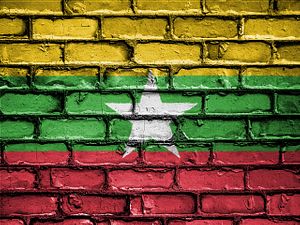The holding of yet another round of peace talks in Myanmar last week once again exposed a familiar reality: That despite renewed efforts over the past few years, the country’s internal conflicts continue to prove difficult to manage, let alone extinguish. But though it may be easier to fixate on past legacies and existing challenges, with upcoming elections later this year the key question moving forward is whether the next Myanmar government will be able to make any further progress in the coming years.
As I have observed previously here and elsewhere, even though Southeast Asia may not have experienced major war since the Sino-Vietnamese war in 1979, it is still home to several unresolved conflicts and disputes, whether it be unsettled territorial and maritime claims between countries that flare up on occasion or contestations within countries that preoccupy policymakers. And among these has been the decades-long conflict between the government and various armed ethnic groups in Myanmar, which has persisted since the country’s independence and has continued to loom as a challenge for Aung San Suu Kyi’s National League for Democracy (NLD) since it took office in 2016.
Suu Kyi’s government initially made advancing a peace process initiated under Thein Sein’s rule a key priority despite the difficulties therein, and her own remarks at the coordination meeting earlier this month before the holding of another session of the Panglong Peace Conference last week indicated that she does realize its importance. Yet as the NLD approaches the end of its first term, even those officials familiar with the dynamics of the peace process would privately admit that progress has been disappointing. The most powerful armed groups still remain outside of the peace process, conflicts are intensifying in certain areas of the country such as Rakhine state, and developments such as the Rohingya crisis and the global coronavirus pandemic are complicating events on the ground.
Some of those dynamics were on display last week as well. As had been expected, several of the country’s largest armed groups, including the Arakan Army, were not present in the formal proceedings, while tensions between the government in Naypyidaw and the Myanmar military, known as the Tatmadaw, were bubbling beneath the surface. The signing of the third part of the Union Accord following the ending of the peace conference on August 21 with some modest progress made may have allowed the NLD to claim that the peace process was still on track. But even Suu Kyi herself admitted the difficulties so far in even committing to and then following through on incremental gains, let alone achieving the broader, longer-term objective of realizing a roadmap toward national reconciliation and a democratic federal union.
But beyond the deliberations this week, the key question is what the future will hold for Myanmar’s peace process beyond the upcoming elections. Some of the headlines may lead some to turn to cynicism and conclude that peace talks are no more than just talk and that old obstacles will prevent any meaningful progress at all. However, there are in fact ways that parties could move forward as those familiar with conflict dynamics have suggested, be it a government review of some of the structures of the peace process or managing the situation in Rakhine state. And as ever, the variables shaping the dynamics of the peace process will be governed by an array of actors beyond the government, including individual ethnic armed groups, factions within the military, and international actors as well.
The exact trajectory of Myanmar’s peace process remains unclear, and will be intimately tied with broader governance issues such as the agenda of a new Myanmar government, the treatment of ethnic groups, and the evolution of civil-military relations and related issues such as constitutional change. But how exactly this will play out will be critical to watch given that it could have significant implications, not only for general conflict dynamics, but for the welfare of populations within Myanmar as well as the political future of the country. As we see more headlines related to peace and conflict in Myanmar in the coming weeks and months, this bigger picture will be important to keep in mind.

































